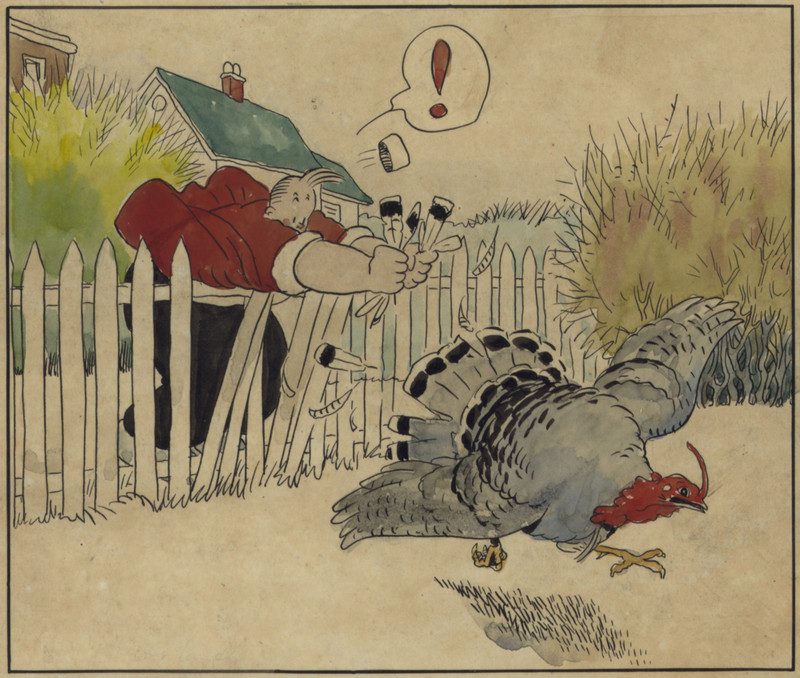|
| Query: bird | Result: 16529th of 32671 | |
domesticated turkey (Meleagris gallopavo)
| Subject: | domesticated turkey (Meleagris gallopavo)
| | Poster: | Wiki Photos (---@---.---)
| |

| Resolution: 1948x1652
File Size: 738693 Bytes
Upload Date: 2017:05:22 06:46:49
|
Fifth panel from a Gasoline Alley Sunday comic strip from 1921. Walt is trying to catch a runaway turkey.
Date 1921
Source Library of Congress
Author Frank King
Source: https://commons.wikimedia.org/wiki/File:Gasoline_Alley_1921_Walt_trying_to_catch_a_turkey_(panel_5).jpg
The domesticated turkey (Meleagris gallopavo) is a large poultry bird, domestic form of the wild turkey. The English language name for this species results from an early misidentification of the bird with an unrelated species which was imported to Europe through the country of Turkey. |
^o^
Animal Pictures Archive for smart phones
^o^
|
|